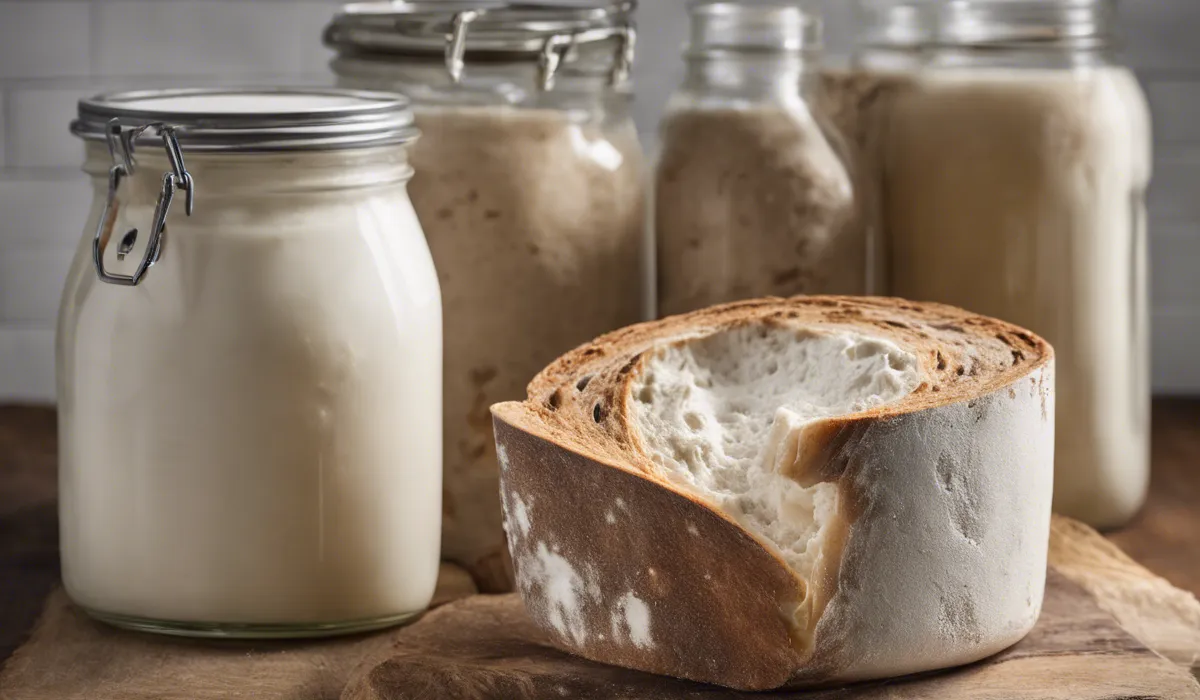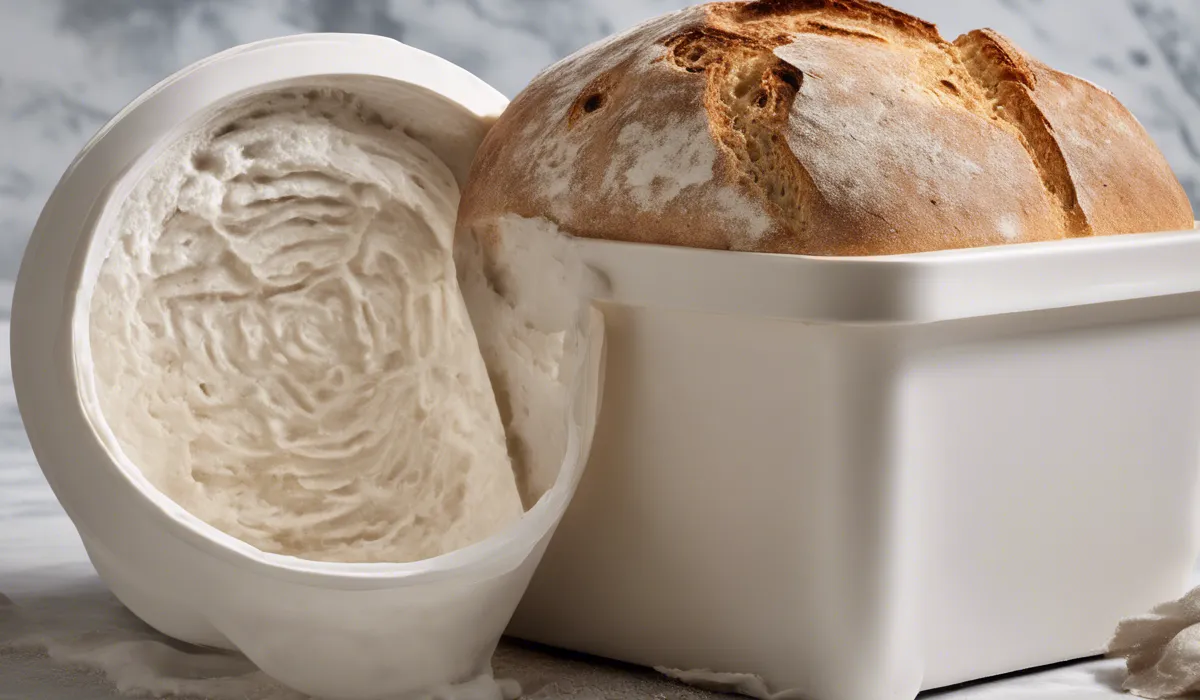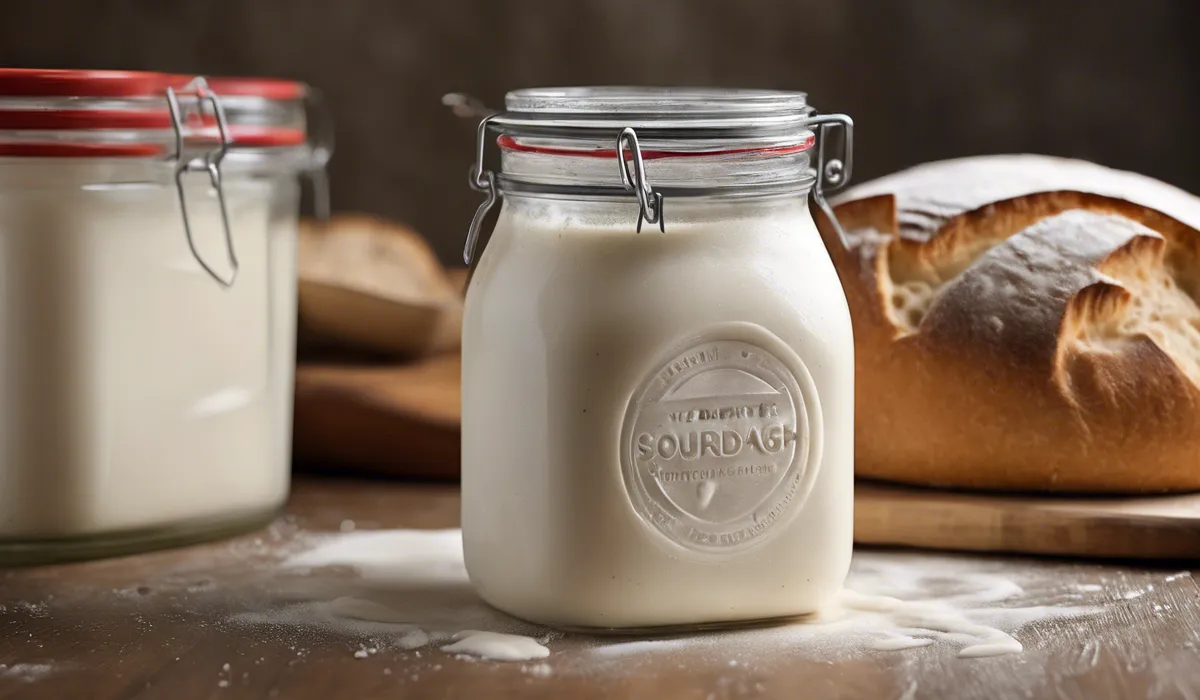Your sourdough starter may have molded due to contamination, poor sanitation, or inadequate feeding. Ensure utensils are clean and the starter is kept in a non-contaminated environment. Regular feeding helps maintain acidity, which prevents mold.
Causes of Mold in Sourdough Starter

Introduction to Mold and Its Conditions
Mold is a type of fungus that thrives in warm, damp environments. It can come in various colors like green, black, or white.
In a sourdough starter, mold occurs when the conditions favor its growth over the beneficial bacteria and yeast.
Mold can be harmful to your health, so it is important to prevent it from growing in your starter.
Contamination Sources
Several sources can introduce mold to your sourdough starter. These include the tools you use, the ingredients you choose, and the environment you keep your starter in.
Let’s look at how these factors can lead to a moldy starter.
Utensils and Containers
Dirty utensils and containers are common culprits for introducing mold spores to your sourdough starter. If not cleaned properly, they can harbor mold from previous uses.
Ingredients
The flour and water you use in your starter can also bring in mold spores. Organic matter in tap water and flour not stored properly can be sources of contamination.
Environment
The air around us contains mold spores, and in an environment that is too warm or not ventilated well, mold can start to grow in your starter.
Incorrect Feeding Ratios and Schedules
A sourdough starter needs regular feeding with the right ratio of flour to water. If not, the acidity level can drop, making it easier for mold to grow.
Temperature and Humidity Factors
Temperature and humidity play significant roles in the health of your sourdough starter. If conditions are too hot and humid, mold can develop quickly.
Poor Starter Maintenance
Neglecting your sourdough starter by not stirring it regularly or leaving it without feed for too long can lead to a weakened culture. This makes it more susceptible to mold.
Preventing Mold in Your Sourdough Starter

Sanitation Practices
Keeping everything clean is key to preventing mold. Let’s explore the best ways to maintain a hygienic environment for your starter.
Cleaning Utensils and Containers
Make sure to thoroughly clean any spoons, bowls, or jars you use for your starter. Hot, soapy water followed by a good rinse can keep mold at bay.
Washing Hands
Before touching your starter or any related items, wash your hands. This simple step can prevent transferring any unwanted bacteria or mold.
Proper Storage
Where and how you store your starter can affect its health. Below are some tips on choosing the right container and maintaining the best conditions for your starter.
Choosing the Right Container
Select a container that is easy to clean and has a loose-fitting lid to allow gases to escape without letting in too much air which could carry mold spores.
Optimal Storage Conditions
Keep your starter in a place with a stable temperature and away from direct sunlight. Ideally, it should be stored in a cool, dry space.
Feeding Techniques
Regular feeding with the correct balance of flour and water will keep your starter strong and less likely to mold. Here’s how to do it right.
Consistent Feeding Schedule
Feed your starter at regular intervals, depending on whether it’s kept at room temperature or in the fridge. Consistency is key to maintaining a healthy culture.
Correct Flour-to-Water Ratios
Use equal parts flour and water by weight to maintain the right acidity levels that make it hard for mold to grow.
Monitoring the Starter’s Environment
It is critical to keep an eye on the conditions where your starter lives. Let’s discuss how you can control temperature, humidity, and airflow.
Temperature Control
Maintain a consistent temperature, ideally between 68 to 75 degrees Fahrenheit, to prevent mold growth.
Humidity Management
Keep humidity levels moderate. If you live in a very humid area, consider using a dehumidifier or storing your starter in a drier place like a pantry.
Airflow Considerations
Good airflow can help prevent mold. However, too much air circulation might introduce more mold spores. Find a balance that works for your starter.
Remedies for a Moldy Sourdough Starter

Assessing the Mold Situation
When you spot mold, assess how deep and widespread it is. This will help you decide if you can save the starter or if you should start anew.
When to Discard the Starter?
If mold has penetrated deeply or is all over the starter, it’s safest to discard it and begin again.
Steps to Rescue a Mildly Affected Starter
If the mold is just on the surface, you might be able to save your starter. Here’s how.
Removing Moldy Portions
Carefully remove the moldy parts without stirring them into the rest of the starter. Make sure to get rid of all visible mold.
Transferring to a Clean Container
Once the mold is removed, transfer the healthy portion of the starter to a new, clean container.
Restarting a New Sourdough Starter
If you need to start over, here are the initial steps and tips to keep your new starter healthy.
Initial Steps
Begin with fresh flour and water, and use a clean container. Follow the steps you know but with extra care to prevent mold this time.
Maintenance Tips for a Healthy Starter
Keep up with regular feedings, maintain a clean environment, and monitor the temperature and humidity to avoid a repeat of mold.
Learning from Mistakes
Everyone makes mistakes, but they can be a chance to learn. Keep track of what works and what doesn’t to make your sourdough starter better than ever.
Keeping a Starter Journal
A journal can be a helpful tool to record feeding schedules, environmental conditions, and any issues that arise. This record can guide you in making improvements.
Adjusting Practices Based on Observations
Use your observations to refine your sourdough starter routine. Small adjustments can make a big difference in preventing mold and maintaining a healthy starter.
FAQs About Sourdough Starter Mold
Why did my sourdough starter develop mold?
Mold in your sourdough starter can occur due to contamination, poor sanitation practices, or inadequate feeding, which compromises the starter’s acidity needed to prevent mold growth.
How can I prevent mold in my sourdough starter?
Prevent mold by using clean utensils, keeping the starter in a clean, non-contaminated environment, and maintaining a regular feeding schedule to preserve its acidity.
Can contamination cause mold in sourdough starters?
Yes, contamination from unclean surfaces, utensils, or ingredients can introduce mold spores to your sourdough starter, leading to mold growth.
Is it safe to use a sourdough starter that has molded?
No, it is not safe to use a sourdough starter that has molded. The presence of mold indicates that it is contaminated and should be discarded.
What role does feeding play in preventing mold on a sourdough starter?
Regular feeding of your sourdough starter helps to maintain the necessary acidity that creates an environment hostile to mold, thus preventing its growth.
Final Thoughts
Mold in your sourdough starter is typically a result of contamination or poor sanitation. It’s essential to use clean utensils and store the starter in a clean environment.
Adequate and regular feeding is equally important as it maintains the necessary acidity in the starter, creating an inhospitable environment for mold growth.
